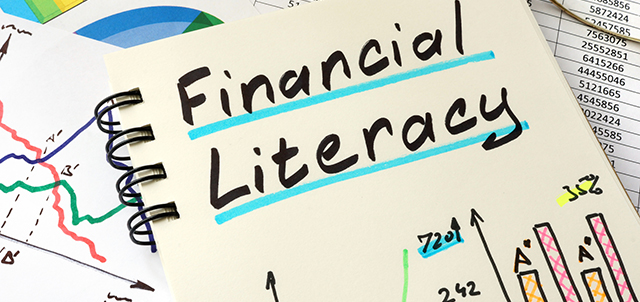ESG Investing—Clearing the Air on Social Impact Financial Products

Increasingly, many investors have been choosing to put money where their values are—into a growing array of products that fall broadly into the category of environmental, social and governance investing, often called ESG investing for short.
Calling an investment
"green" can be subjective,
which opens the door to
the potential exploitation
of the label.
If you're thinking about investing in ESG products, here are some tips to keep in mind and traps to avoid.
ESG Essentials
ESG investing strategies use a variety of environmental, social and governance criteria to make investment selections that aim to create both competitive financial return and a positive impact on society.
Socially responsible investment criteria might include factors such as gender equality, workplace diversity, fair labor standards, safe working conditions and human rights.
On the governance side, factors such as executive compensation, board diversity, or anti-bribery and corruption policies might weigh into investment decision making.
There is no formal definition of an ESG investing style, and various names are often used interchangeably to describe it, such as "sustainable investing," "socially responsible investing" and "impact investing."
ESG investments are available to retail investors primarily through mutual funds, but investments such as exchange-traded funds (ETFs) and green bonds also offer ESG investment options. In addition, employer-sponsored plans and robo-advice platforms might offer sustainable investing choices.
The key takeaway: Each ESG investment is unique, and should be evaluated on its own terms.
Investor Tips
If you're considering an ESG investment, or own ESG investments already, keep these tips top of mind.
- Know your investment goals and risk tolerance. Any ESG investment should mesh with your overall investment goals. And because all investments carry some degree of risk, you will want to be knowledgeable about, and comfortable with, business and market risks associated with your investment.
- Understand the ESG fund's investment criteria. This information is found in the fund's prospectus. For example, some funds use an exclusionary investment process when making investment choices (for instance, omitting stocks of companies that are in particular sectors such as tobacco or alcohol). Others use an inclusive process (for instance, including companies that meet certain ESG criteria such as those focused on long-term supply-chain sustainability or that maintain a minimum percentage of female board members). Some funds focus on a range of ESG areas, others might focus only on one aspect, such as governance.
- Be alert to potential "green washing." Calling an investment "green" can be subjective, which opens the door to the potential exploitation of the label. Due diligence, including a close reading of the fund prospectus or bond offering, is a good place to start your investigation. Track any environmental milestones the various companies in a fund or bond issuer might report. Use your own judgement to decide whether an investment meets your criteria for a green investment. For instance, would you consider a bond to build a dam "green" if the underlying project included the installation of a wind farm? Reasonable minds can differ. Sometimes, the only person who can answer such questions is you.
- Do a values check. Review the individual investments of the ESG fund. Are they in line with your own values? While you're at it, check whether you already own any of the investments held by the fund, perhaps through another fund or as individual stocks.
- Stay diversified. Holding all your assets in a single ESG fund—especially one that might be narrowly focused, say just investments in clean energy or an individual green bond—typically leaves investors with a lower level of diversification than they might achieve by holding a variety of asset classes (for example, a mix of stocks, bonds and cash). You can also diversify within an asset class or investment style. For instance, you could invest in ESG funds that do not overlap substantially in the stocks or bonds they hold, or select a broadly invested ESG fund that covers a range of industries and sectors, or a fund of green bonds instead of an individual green bond.
- Be prepared for lack of "criteria consistency." Since there is no technical or legal definition of what constitutes an ESG investment, you will likely find that interpretations differ. What constitutes an ESG investment for one portfolio manager or bond issuer may not necessarily align with another, or it might be at odds with your own view.
- Be on the look-out for "green" scams. Be very wary of pitches that dangle the promise of large gains from investing in ESG initiatives, particularly if those pitches involve small, thinly traded "penny" stocks. Some may be fraudulent. Best course of action? Walk away from unsolicited offers that might reach you by mail, social media or a phone call.
Always independently verify whom you are dealing with and whether the seller of the investment is licensed to do business with you using FINRA's BrokerCheck.
- Look beyond marketing materials. Never rely solely on marketing materials, as they could potentially be exaggerated and place a disproportionate emphasis on ESG criteria. A more comprehensive picture of the investment can usually be found in the company's SEC EDGAR filings. Reading the fine print can help avoid situations where the marketing or promotional materials for an investment might not tell the whole story.
- Know and compare fees. ESG funds often take more work for fund managers to construct and manage and, consequently, can cost more than a passive fund that tracks a broad-based market index. Research how much any investment you're considering will cost you over time, paying attention to the annual expense ratio for an ESG fund. If you are using an investment professional, ask about any fees associated with an investment, such as sales charges, ongoing fund expenses, how much it costs to buy or sell the security, or assets-under-management fees.
- Use FINRA's Fund Analyzer to compare fund expenses.
- FINRA's BondFacts shows you last-sale bond prices and more.





